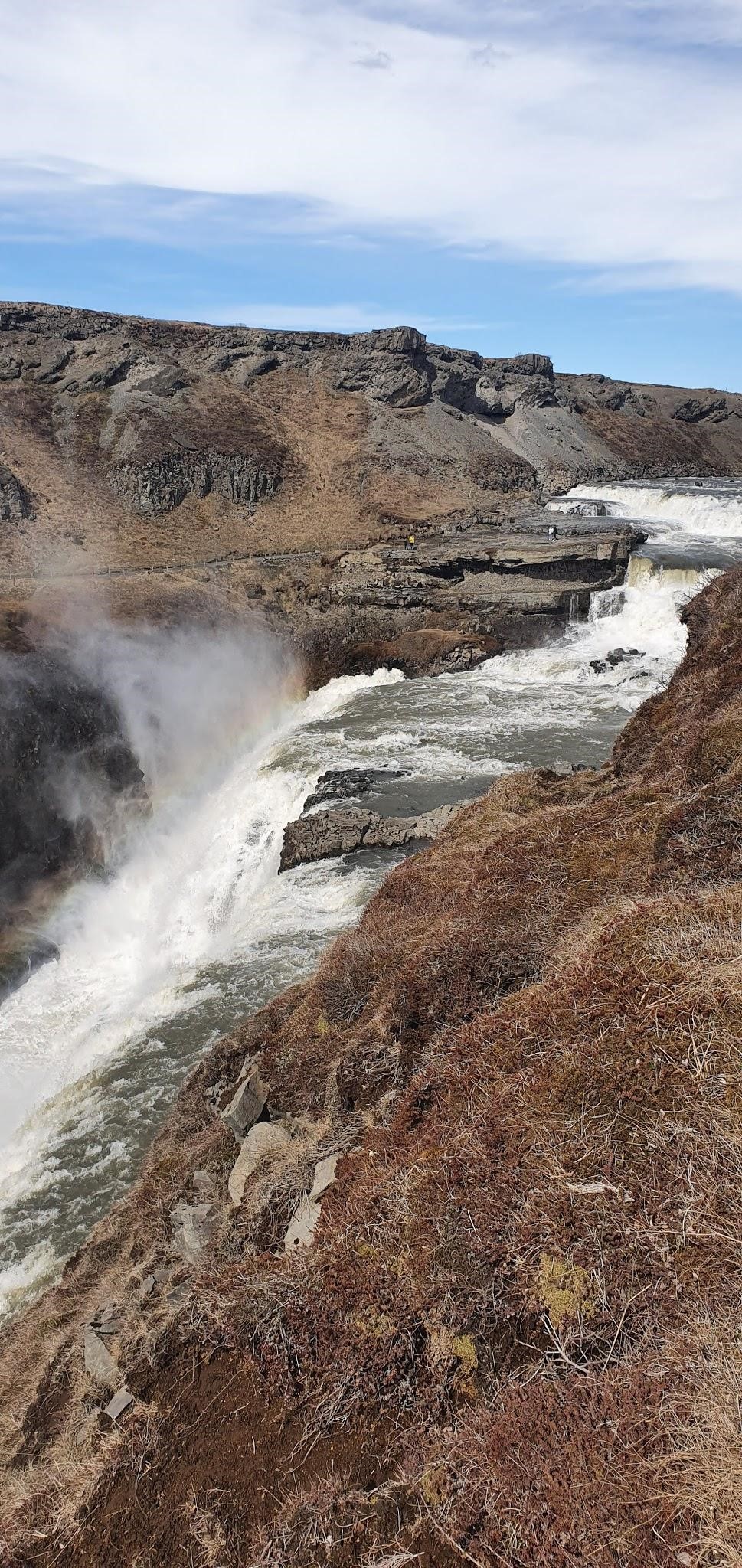Vinna við nýjar heimasíður Umhverfis- og orkustofnunar og Náttúruverndarstofnunar er í gangi. Heimasíða Umhverfisstofnunar er virk á meðan vinnunni stendur. Information in English
Nature and geology
.jpg)
Gullfoss was protected in 1979. The aim of the protection was to preserve the waterfall and the canyon below it and to allow people to enjoy these natural wonders. The ecosystems and vegetation in the area are also protected.
Gullfoss consists of two waterfalls; the upper waterfall is 11 metres, and the lower is 20 metres. The geological layers the waterfall falls over were all formed during the warm period of the ice age. In the waterfall’s ridges are dolerite layers, and between them is a sediment layer almost 10 m thick made from conglomerate rock, mudstone and gravel on the top. All the sediment layers, except the gravel layer, are well bonded. The visible thickness of the gravel layer in the waterfall is 8 m, but it is 40 m at the front of the canyon. The gravel layer has loose gravel lenses in many places, which the water easily washes out of the rock, and this is the main cause for the rapid excavation of the waterfall.

The average water flow in Gullfoss is 109 cubic metres per second. The water volume in the biggest floods ever recorded has reached 2000 cubic metres per second. In summer, 130 cubic metres flow through the waterfall.
There are two main theories on how Gullfoss was formed. On one hand, it is thought that Gullfoss canyon was formed in a great glacial outburst flood at the end of the ice age, where a high volume of water gathered at the edge of the glacier and finally burst, causing its erosive forces to form the canyon. During a glacial outburst, the amount of water rushing through the river channel in one day is equivalent to the amount of water that flows through there in five years, but the erosive power of the outburst is much greater.
On the other hand, it is thought that over time, Hvítá carved its path through the land and that the canyon has been forming at a steady pace since the glacier started melting at the end of the ice age. The second theory is believed to be more plausible.
In addition to the waterfall and the canyon, the ecosystems and vegetation are protected too, as the spray from the waterfall creates growing conditions for numerous plants. Berry heather, mosses and scrub are prominent. Because Gullfoss is so high above the sea level, vegetation is fragile and the growth period short. Vegetation erosion can therefore take a long time to recover, and there are many unmarked paths within the nature reserve that take a long time to heal.